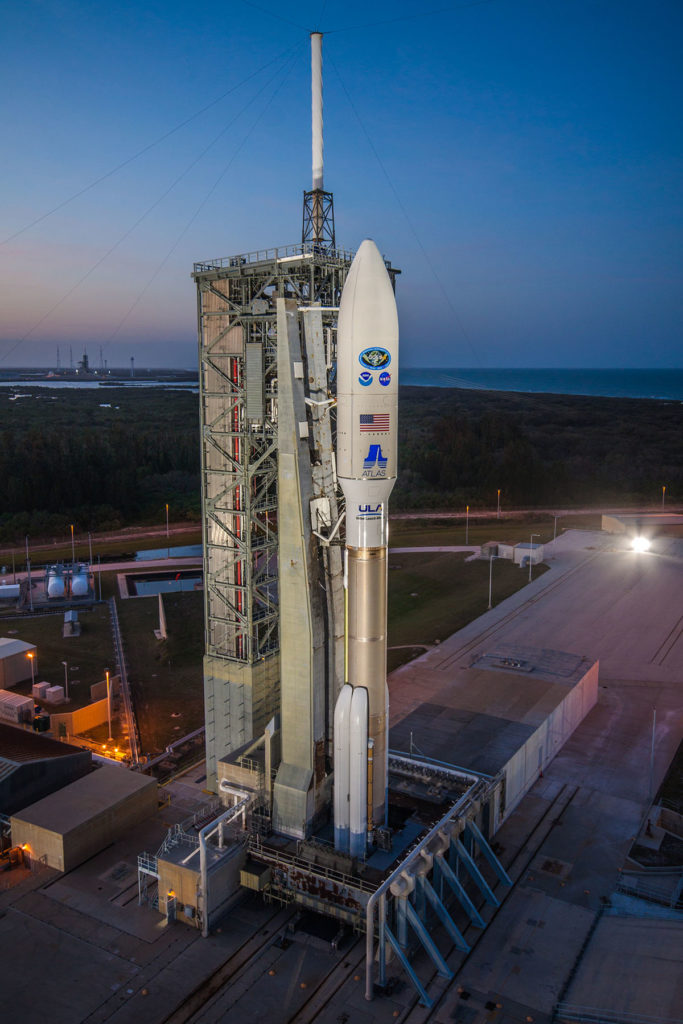
The rocket standing on the pad at Space Launch Complex 41 is an Atlas V 541 configuration, one of the most powerful rockets in the Atlas V fleet. The 541 designation means this rocket has a payload fairing, or nose cone, that is approximately five meters wide, four solid-rocket boosters fastened alongside the central common core booster, and a single engine on its Centaur upper stage. Booster propulsion is provided by the RD-180 engine system, a single engine with two thrust chambers. The RD-180 burns Rocket Propellant-1 (RP-1), a highly purified kerosene, along with liquid oxygen. Four solid rocket boosters generate the additional power required at liftoff, each providing 348,500 pounds of thrust.
The booster is controlled by the Centaur second stage avionics system, which provides guidance, flight control and vehicle sequencing functions during the booster and Centaur phases of flight. An Atlas V 541 rocket launched NASA’s Curiosity rover Nov. 26, 2011 on its 10-month, 354-million-mile journey to the surface of Mars. The single-engine Centaur upper stage is a cryogenic vehicle, fueled with liquid hydrogen and liquid oxygen. The two-piece payload fairing that protects the GOES-S satellite tops the vehicle.
